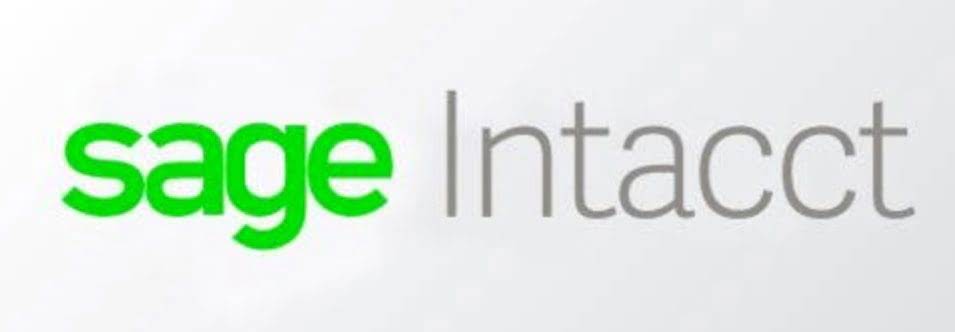What to do when a W-2 or Form 1099 is missing or incorrect Internal Revenue Service
10 Euro bez Depozytu Casino 10 Euro Bez Depozytu Za Samą Rejestrację
07/06/2023Download Mostbet App For Android In Banglades
10/06/2023
The 1099 forms, such as 1099-MISC and 1099-NEC, are commonly used to report payments made to non-employees or independent contractors during the tax year. Typically, businesses are required to report payments and compensation made to nonemployees and certain vendors using 1099 forms. If you receive income from a source other than earned wages or salaries, you may receive a Form 1099-MISC or Form 1099-NEC. Generally, the income on these forms is subject to federal and state income tax for the recipient. We’ll walk you through what’s included on these forms and what penalties you may incur for not meeting a 1099-NEC or 1099-MISC filing deadline. Form 1099 is an essential tax form that small businesses must complete to report payments they made to independent contractors or other nonemployees.

Deadline for filing Tax Form 1099-NEC and 1099-MISC
For example, if the recipient is an individual beneficiary, enter the name and social security number of the individual; if the recipient is the estate, enter the name and employer identification number of the estate. The general backup withholding rules apply to this payment. You must also file Form 1099-MISC for each person from whom you have withheld any federal income tax (report in box 4) under the backup withholding missed 1099 deadline rules regardless of the amount of the payment. Form 1099 is an information return that reports various types of income other than wages to the Internal Revenue Service (IRS). It is essential for businesses to file these forms accurately and on time to avoid penalties. The most common 1099 forms are Form 1099-NEC for non-employee compensation and Form 1099-MISC for miscellaneous income like rent, attorney fees, or prizes.
- A Form 1040 return with limited credits is one that’s filed using IRS Form 1040 only (with the exception of the specific covered situations described below).
- Sending in the form grants you one automatic 30-day extension.
- No additional enclosures, such as advertising, promotional material, or a quarterly or annual report, are permitted.
- The above doesn’t cover every tax deadline, merely the most important ones broadly relevant to these groups of taxpayers.
- The general backup withholding rules apply to this payment.
- Beginning with tax year 2020, Form 1099-NEC must be filed by January 31 of the following year whether you file on paper or electronically.
Form 1099-NEC & Form 1099-MISC: Deadlines & Penalties for 2022-2023 Tax Year
Generally, payments made to employees under an accountable plan are not reportable on Form W-2, except in certain cases when you pay a per diem or mileage allowance. For more information, see the General Instructions for Forms W-2 and W-3, andPub. For information on reporting employee moving expense reimbursements on Form W-2, see the General Instructions for Forms W-2 and W-3. Generally, you must report payments to independent contractors on Form 1099-NEC in box 1. Do not use Form 1099-MISC to report employee business expense reimbursements. For more information, see theGeneral Instructions for Forms W-2 and W-3, and Pub.
What are the penalties for not reporting Form 1099 income?
You may be subject to a penalty for an incorrect or missing TIN on an information return. You will need to apply for a Transmitter Control Code (TCC) to e-file information returns. A separate TCC is required for each system, IRIS-TCC and/or FIRE-TCC. As the TCC application process may take up to 45 days to process, you should apply before the filing season. Once you receive your TCC, it can be used from year to year. The e-filing requirement does not apply separately to original returns and corrected returns.
Late Filing and Reporting Penalties

To report payments to an attorney on Form 1099-NEC, you must obtain the attorney’s TIN. An attorney is required to promptly supply its TIN whether it is a corporation or other entity, but the attorney is not required to certify its TIN. If the attorney fails to provide its TIN, the attorney may be subject to a penalty under section 6723 and its regulations, and you must backup withhold on the reportable payments. You may enter an “X” in this box if you were notified by the IRS twice within 3 calendar years that the payee provided an incorrect TIN. If you mark this box, the IRS will not send you any further notices about this account. To report payments to an attorney on Form 1099-MISC, you must obtain the attorney’s TIN.
- File Form 1099-MISC to report the payments and withholding to tribal members.
- Generally, keep copies of information returns you filed with the IRS, or have the ability to reconstruct the data, for at least 3 years (4 years for Form 1099-C), from the due date of the returns.
- Enter the name and TIN of the payment recipient on Form 1099-MISC.
- To correct a paper return after filing the form, file Copy A of the form with a revised Form 1096 to your state’s IRS Submission Processing Center.
- Therefore, you must report attorneys’ fees (in box 1 of Form 1099-NEC) or gross proceeds (in box 10 of Form 1099-MISC) as described earlier to corporations that provide legal services.
- If the IRS finds anything wrong with your 1099 or that you neglect to file one, they have 3 years to take action.
Form 1099-MISC, for Miscellaneous Income, is a tax form that businesses complete to report various payments made throughout the year. One Form 1099-MISC should be filed for each person or non-incorporated entity to whom the business has paid at least $10 in royalties or at least $600 for items such as rent and medical or health care https://www.bookstime.com/ payments. The following penalties generally apply to the person required to file information returns. The penalties apply to paper filers as well as to electronic filers. This number must not appear anywhere else on the form, and this box may not be used for any other item unless the separate instructions indicate otherwise.
When do you need to issue 1099 forms?
- Awareness of these changes and adherence to the appropriate form is vital for businesses seeking to report non-employee compensation faithfully.
- When an employee dies during the year, you must report the accrued wages, vacation pay, and other compensation paid after the date of death.
- The following are exceptions to the failure-to-file penalty.
- The interest rate is determined on a quarterly basis, and it is usually the federal short-term rate plus 3%.
- Generally, payments made to employees under an accountable plan are not reportable on Form W-2, except in certain cases when you pay a per diem or mileage allowance.
Keep the information for each state separated by the dash line. If you withheld state income tax on this payment, you may enter it in box 16. In box 17, enter the abbreviated name of the state and the payer’s state identification number. The state number is the payer’s identification number assigned by the individual state. Penalties may be charged for each 1099 form that is not correctly filed on time, and also for each payee statement that is not provided.

Late Fee/Penalties for 2022-2023 Tax Year
For more information, go to IRS.gov and enter “foreign agricultural workers” in the search box. Before Bailey’s death on June 15, 2022, Bailey was employed and Bailey received $10,000 in wages on which federal income tax of $1,500 was withheld. When Bailey died, Bailey’s employer owed Bailey $2,000 in wages and $1,000 in accrued vacation pay. The total of $3,000 (less the social security and Medicare taxes withheld) was paid to Bailey’s estate on July 20, 2022. Because Bailey’s employer made the payment during the year of death, Bailey’s employer must withhold social security and Medicare taxes on the $3,000 payment and must complete Form W-2 as follows.

Penalties for late 1099s
If you work with self-employed independent contractors or gig workers, get ready to file a 1099 form this tax season. While balancing multiple deadlines and different forms to file, you may miss a deadline or submit an inaccurate return. When that happens, the IRS will send you a notice of a 1099 late filing penalty (or penalties) detailing what you owe to correct the situation. If you must file any Form 1097, 1098, 1099, 3921, 3922, 5498, or W-2G with the IRS and you are filing paper forms, you must send a Form 1096 with each type of form as the transmittal document. You must group the forms by form number and submit each group with a separate Form 1096.
